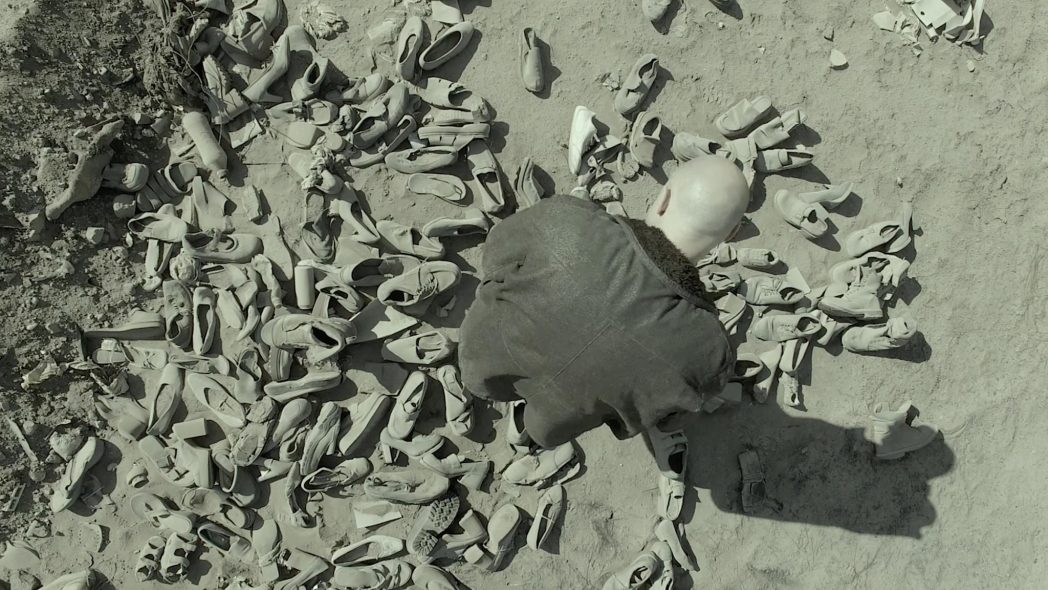
Dir.: Andrew Kötting; Cast: Xavier Tchili, Catherine Tchili, Clay Barnard (voice); UK 2017, 92′
Based on the play Ivan and the Dogs by Hattie Naylor, Andrew Kötting’s experimental feature uses archive and narrative film and the Tchili/ Kötting family’s private footage to create a deeply disturbing portrait of an end-of-time dystopian world, set in 1990s Moscow and shot in the eerie desert of Antofogasta in Northern Chile. LEK completes Kötting’s EARTH trilogy, comprising This Filthy Earth and Ivul.
Timely themes of survival, social deprivation and family breakdown are depicted through the real life experience of Ivan Mishukov, who left his dysfunctional home at the age of four to seek the creature comforts of a pack of stray dogs eking out an existence on the hyper-violent streets of recession-hit Moscow. Kötting brings his fine arts training to bear on Lek’s vulnerable view of the world; hunger, pain and bewilderment are drawn with acute sensitivity in the stark desert landscape, where he sometimes walks on all fours.
Voiced by Clay Barnard, audiotapes reveal his mother’s murder at the hands of his stepfather, and expose the cruelty of a social system where all dogs where expelled from the city centre so that they would starve. A child psychologist explains the post traumatic experiences of neglected children like Lek who came to identify with the instinctual purity of animals who gravitate towards “warm pipes” for security and survival. A visceral relationship develops between Lek and the neighbour’s daughter Mina (C.Tchili), who becomes the love of his life (“She said to me, you are so full of dog”) and they go on to have a child, but the story ends in tragedy.
Societal breakdown takes the form of bulldozers destroying dilapidated houses, or breaking up roads in a hostile terrain; sometimes, whole areas appear to be depopulated in the aftermath to a supposed nuclear attack. As the planet becomes ever devoid of human civilization, so nature claims back its territory. There are many enigmatic clues to Lek’s childhood: like a certain Irina, who gave him the audio recorder; visits to Punch and Judy shows and repeated visuals showing canine life underground – dogs, always dogs.
Told in fourteen chapters, with headings such as “The Hope Thereunder”; “The Nature of Eternity” and “A Natural History of Destruction”, this is a film fraught with motifs of alienation and destruction, and ending with a long overhead shot of Lek walking in an absurdist cemetery where symbols have replaced graves, as the tapes finally runs out, on his 49th birthday.
It would facile to liken Lek with Tarkovsky’s Stalker, or to compare the use of symbolism with that of Sukorov – there may well be parallels, but Lek does not need comparisons, or classification: it can stand on its own as a unique achievement. Let’s also not be tempted to fall into the trap of over-thinking the analyses and commentary of the endless psychologists droning on in the background. Lek’s images, however cryptic or elliptical, tell their own story, and that is the beauty of it all. AS
OUT IN CINEMAS ON 8 JUNE 2018